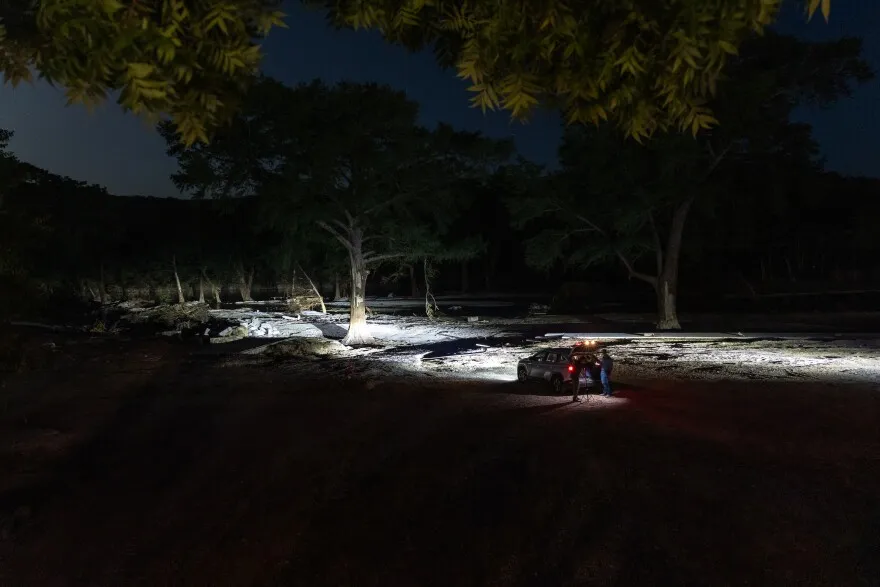Texas Floods: A Catastrophe Unfolds Amidst a Disaster Response Crisis
In a scene that no parent should ever witness, the anguished plea “Throw me the baby!” echoed above the roar of floodwaters as a Texas family faced the unimaginable. The devastating flash floods, which swept across the state, have not only claimed lives and ravaged communities but have also sparked a debate about the adequacy of disaster response systems in the United States.
The Tragedy: Lives Lost and Families Torn Apart
The shocking deluge that struck Texas this month has resulted in the deaths of at least 130 people, according to local authorities, with the search continuing for additional missing persons. Reports indicate that a family of four, whose RV was swept away by the rising waters, made desperate attempts to save each other as they were engulfed by floodwaters. The father, who has not been publicly identified, recounted his harrowing experience where escaping from the RV seemed impossible. “I saw the water rising, and I just knew we had to get out. But when I turned around, I couldn’t see my family anymore,” he said, sobbing.
Survivors of the flooding have described a chaotic scene, with multiple RV parks in the area completely submerged. Those who were once hopeful vacationers are now left with their belongings ruined and their spirits crushed. Eyewitness accounts share chilling descriptions of how the floods arrived unexpectedly, leaving little to no time for families to evacuate.
The Immediate Response: Criticism of Emergency Services
As the floodwaters recede, scrutiny has turned to the emergency response efforts. Many residents have expressed frustration at what they describe as a slow reaction from state and local officials. With disaster response protocols in place, some have questioned whether the state was adequately prepared for such an extreme weather event.
Pictures and video footage depict first responders wading through chest-high water, rescuing those trapped in their homes or vehicles. Nevertheless, there have been complaints of delayed responses to distress calls, particularly in rural regions that were hit hardest by the floods.
“It felt like we were waiting forever. We didn’t know if we would make it through the night,” said Hannah Martinez, a local resident who was rescued by a neighbor during the flooding. Although many communities have come together in the wake of the tragedy, the overall response from larger agencies remains under fire.
The Role of Climate Change in Texas Flooding
As the state grapples with recovery, experts are analyzing the role of climate change in the severity and frequency of these extreme weather events. Meteorologists have indicated that rising global temperatures can lead to increased precipitation, creating conditions ripe for catastrophic flooding.
“These types of flash floods are becoming more common as we see changes in our climate,” explains Dr. Sylvia Harris, a climate scientist. “When we couple that with factors like deforestation and urban development, it creates a perfect storm for disaster. Texas has seen a steady increase in rainfall over the past few decades, leading to a greater risk of severe flooding. We need to address these environmental issues if we want to reduce the chances of these tragedies in the future.”
The Aftermath: Rebuilding and Resilience
As communities begin to recover, conversations about rebuilding have taken center stage. Local leaders are pushing for comprehensive disaster readiness plans that not only expedite response times but also take into account future weather patterns linked to climate change.
The drive for resilience has stirred discussions about infrastructure improvements, including better drainage systems and flood barriers, particularly in areas identified as high-risk zones. Local governments are seeking funding from the federal level to support these necessary changes.
Moreover, Texas communities have shown incredible strength in supporting one another during this tumultuous time. Fundraisers, food drives, and volunteer efforts have sprung up, as neighbors come together to help with recovery efforts. The outpouring of aid signifies the spirit of Texans in the face of catastrophe.
Living with the Legacy of Floods
As families rebuild their lives, many grapple with the traumatic experiences of that fateful day. Survivors like Martinez are left to pick up the pieces, alongside those countless individuals still searching for lost loved ones. The emotional toll of the floods goes far beyond the physical devastation; it seeps into everyday life, testing the mental health and fortitude of residents.
Psychologists suggest that community support will be critical for residents as they navigate their grief and trauma. In addition, authorities are teaming up with mental health organizations to provide resources for trauma recovery following the disaster, emphasizing the importance of addressing emotional health along with physical rebuilding.
The Ongoing Search for Accountability
As investigations continue into the disaster response and the circumstances surrounding the flooding, calls for accountability echo through the halls of local government. Lawmakers are facing mounting pressure to review emergency protocols and preparedness strategies, ensuring that future floods do not result in the same level of devastation.
With climate change continuing to affect weather patterns, many leaders advocate for smarter urban planning and preventative measures. The hope is that lessons learned from this disaster can inform future policies that safeguard lives and property in flood-prone areas.
Conclusion: A Call for Change
In the aftermath of these historic floods, Texas finds itself at a crossroads. As the state contends with the repercussions of a catastrophic weather event, it must also confront the realities of climate change and the challenges of disaster response. The journey toward recovery is just beginning, with families facing an uphill battle as they seek to rebuild their lives.
But within this struggle lies an opportunity for significant change—an opportunity to reimagine how we approach disaster preparedness, response, and recovery in an era of unprecedented climate strains. As the floodwaters recede and communities begin to heal, the lessons learned must pave the way for a stronger, more resilient Texas.







